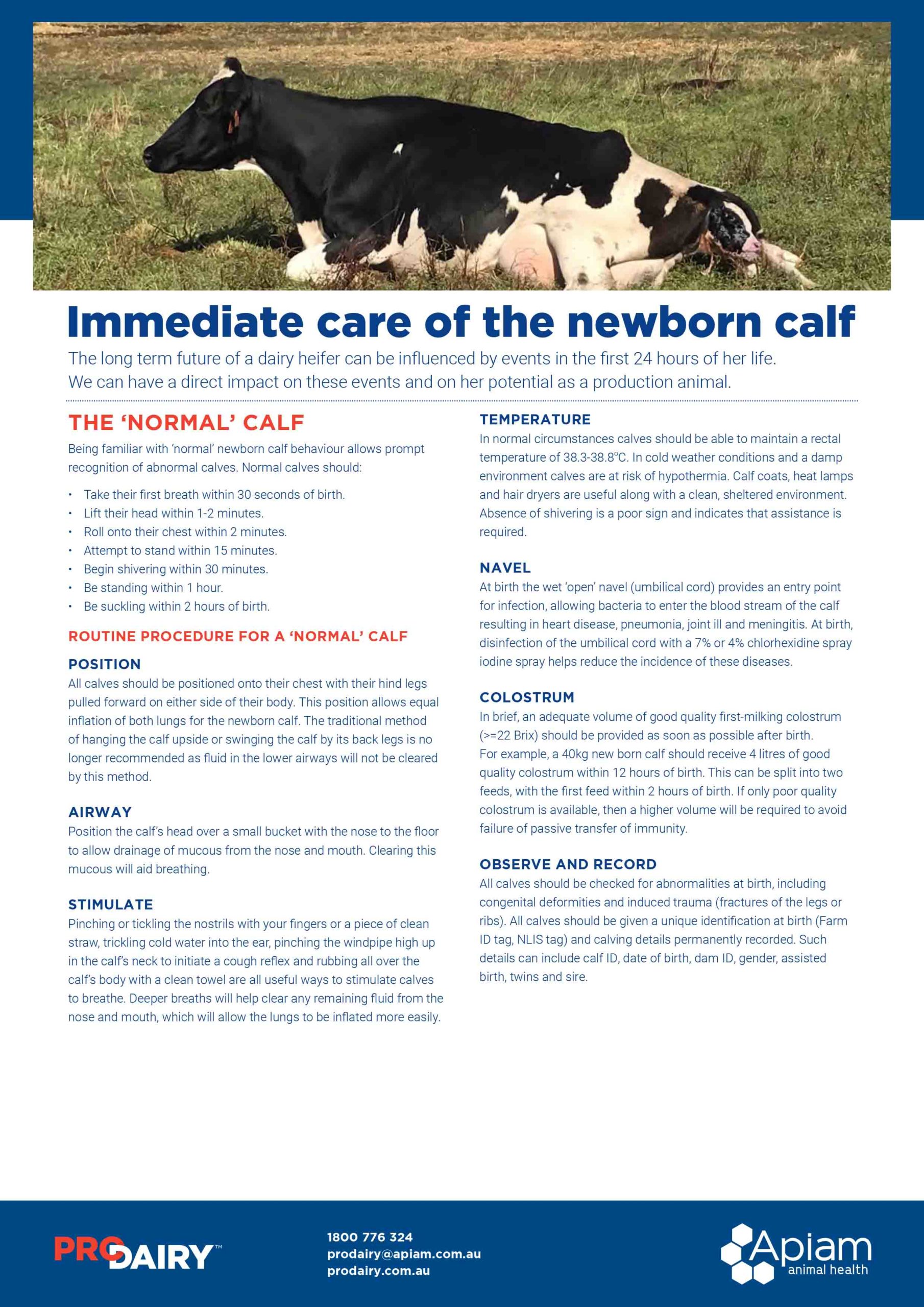The long term future of a dairy heifer can be influenced by events in the first 24 hours of her life. We can have a direct impact on these events and on her potential as a production animal.
THE ‘NORMAL’ CALF
Being familiar with ‘normal’ newborn calf behaviour allows prompt recognition of abnormal calves.
Normal calves should:
- Take their first breath within 30 seconds of birth.
- Lift their head within 1-2 minutes.
- Roll onto their chest within 2 minutes.
- Attempt to stand within 15 minutes.
- Begin shivering within 30 minutes.
- Be standing within 1 hour.
- Be suckling within 2 hours of birth.

ROUTINE PROCEDURE FOR A ‘NORMAL’ CALF
POSITION
All calves should be positioned onto their chest with their hind legs pulled forward on either side of their body. This position allows equal inflation of both lungs for the newborn calf. The traditional method of hanging the calf upside or swinging the calf by its back legs is no longer recommended as fluid in the lower airways will not be cleared by this method.
AIRWAY
Position the calf’s head over a small bucket with the nose to the floor to allow drainage of mucous from the nose and mouth. Clearing this mucous will aid breathing.
STIMULATE
Pinching or tickling the nostrils with your fingers or a piece of clean straw, trickling cold water into the ear, pinching the windpipe high up in the calf’s neck to initiate a cough reflex and rubbing all over the calf’s body with a clean towel are all useful ways to stimulate calves to breathe. Deeper breaths will help clear any remaining fluid from the nose and mouth, which will allow the lungs to be inflated more easily.
TEMPERATURE
In normal circumstances calves should be able to maintain a rectal temperature of 38.3-38.8oC. In cold weather conditions and a damp environment calves are at risk of hypothermia. Calf coats, heat lamps and hair dryers are useful along with a clean, sheltered environment. Absence of shivering is a poor sign and indicates that assistance is required.
NAVEL
At birth the wet ‘open’ navel (umbilical cord) provides an entry point for infection, allowing bacteria to enter the blood stream of the calf resulting in heart disease, pneumonia, joint ill and meningitis. At birth, disinfection of the umbilical cord with a 7% or 4% chlorhexidine spray iodine spray helps reduce the incidence of these diseases.
COLOSTRUM
In brief, an adequate volume of good quality first-milking colostrum (>=22 Brix) should be provided as soon as possible after birth. For example, a 40kg new born calf should receive 4 litres of good quality colostrum within 12 hours of birth. This can be split into two feeds, with the first feed within 2 hours of birth. If only poor quality colostrum is available, then a higher volume will be required to avoid failure of passive transfer of immunity.
OBSERVE AND RECORD
All calves should be checked for abnormalities at birth, including congenital deformities and induced trauma (fractures of the legs or ribs). All calves should be given a unique identification at birth (Farm ID tag, NLIS tag) and calving details permanently recorded. Such details can include calf ID, date of birth, dam ID, gender, assisted birth, twins and sire.
